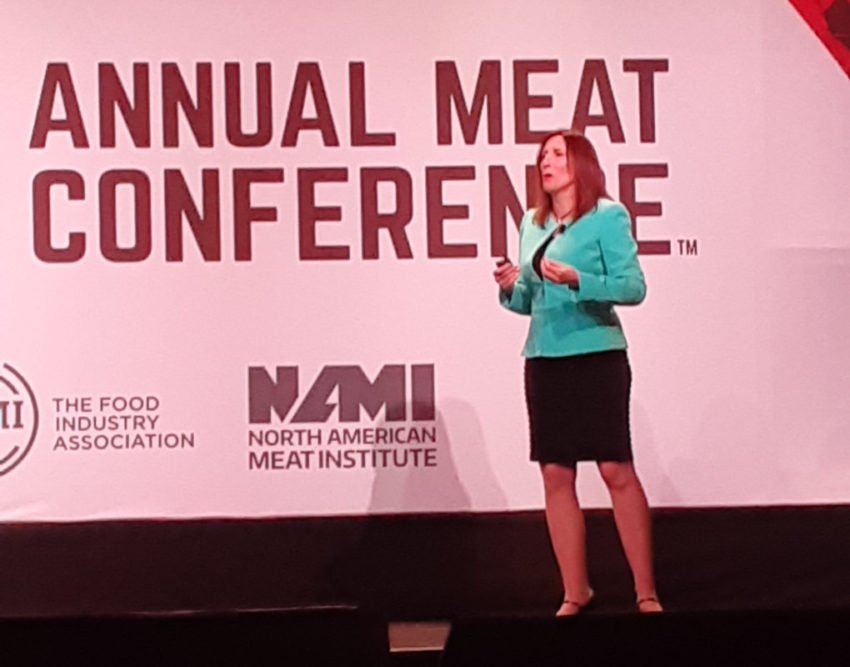DALLAS — Money, time, health. Come up with the right equation using those three variables and you’ll be well on your way to operating a successful retail meat case.
That was one of many takeaways from the North American Meat Institute and FMI – The Food Industry Association’s Power of Meat 2023, the annual report presented by 210 Analytics’ Anne-Marie Roerink, unveiled at the first day of the two groups’ Annual Meat Conference March 6.
Inflation will continue to be front and center for meat and poultry consumers as the year progresses, Roerink said. More than three out of four Americans have changed how they buy meat products at the grocery store because of price concerns.
Retailers that can come up with innovative ways to discount product will thrive.
“Consumers are looking for promotions any which way they can,” Roerink said. “There’s a lot of opportunity for creativity in that space.”
To save money, a large majority of consumers (76%) report they made changes to the amount, type, cut, and/or brand of meat they purchase or changed where they shop.
Consumers’ top strategies to save money include: buying only the amount needed (42%), looking for coupons (35%), and stocking up when meat is on sale (35%).
Seventeen percent said they buy less meat with organic, grass-fed, or other claims. Only 16% of meat shoppers said they cook more meatless meals to save money. Of the 33% of Americans who said they are looking to eat less meat or chicken, 52% cite cost as the reason (up from 16% in 2020).
But price isn’t everything. Consumers are also seeking value, Roerink said, and that often comes in the form of time-saving convenience items like case-ready meats.
Americans are not only buying more case-ready than ever before, 86% of them say case-ready is as good or better than meat from the service case. That’s up from 69% in 2009.
And despite higher prices, consumers did not significantly change the amount of meat they buy (down just 2.5% by volume compared to 2021).
Health concerns — for humans, animals and the planet — are also increasingly important for today’s consumers, according to the Power of Meat ’23.
Eighty-five percent of meat shoppers consider at least one “better for you” attribute when buying meat, whether it’s better for the health of their family or workers, better for animals or better for the environment.
Shoppers weighing health and nutrition in their meat and poultry purchases are focused on three areas: portion control, lean percentage and protein variety in the form of seafood.
Just under half (47%) of shoppers believe meat and poultry brands are committed to responsible and ethical sourcing, and 45% say meat and poultry brands are committed to sustainable production.
Whatever their reason for eating meat, the fact that remains that the category remains more popular than ever.
Self-described “meat eaters” comprise 78% of Americans, compared to just 7% who describe themselves as vegan or vegetarian.
Shoppers spend more than $15 in the meat department per trip and average nearly one trip to the meat department per week (up nearly 5% since 2019).
And while 50% of shoppers get their meat from a supermarket, many turn to supercenters (35%), club stores (4%) and hard discounters (5%) for their meat purchases.
Product quality and appearance continue to be the top factors driving meat purchase decisions, followed by price per pound and total package price.

